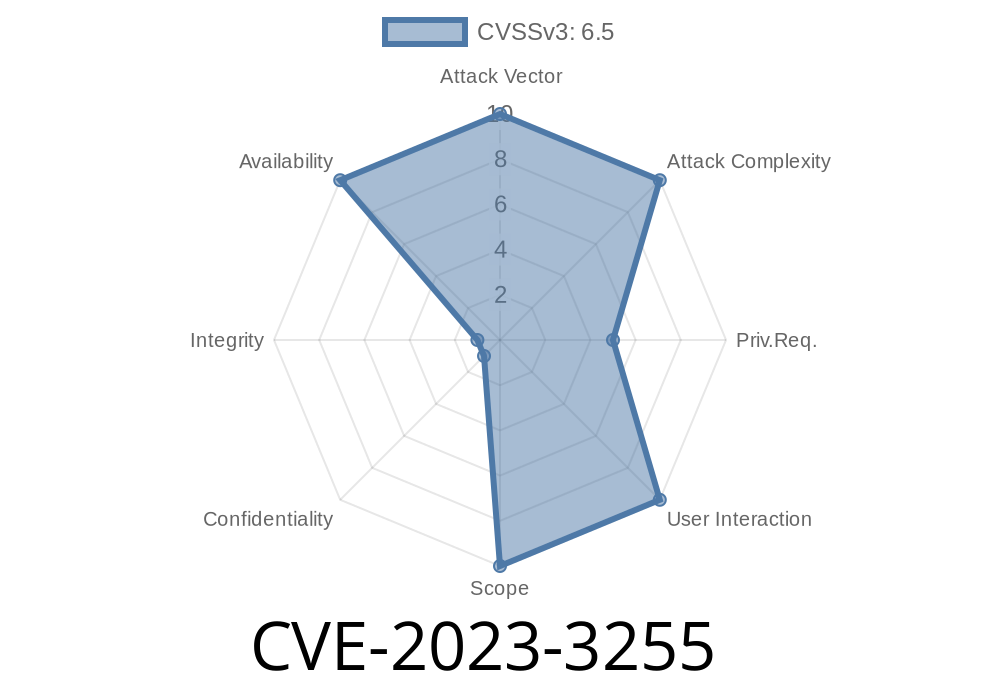In this long-read post, we will discuss a critical vulnerability that has been identified in the QEMU (Quick Emulator) built-in VNC (Virtual Network Computing) server, and it has been assigned with the CVE identifier CVE-2023-3255. The flaw exists while processing ClientCutText messages, and in the worst-case scenario, it can lead to a remote authenticated client triggering a Denial of Service (DoS) attack.
The exploit details, code snippets, and related original references are provided below. Make sure to read the entire post and understand the implications of this security flaw to safeguard your systems and applications that utilize the QEMU VNC server.
Exploit Details
The flaw was found in the QEMU built-in VNC server. A wrong exit condition may lead to an infinite loop when inflating an attacker controlled zlib buffer in the inflate_buffer function. An attacker can exploit this vulnerability to create a DoS scenario by sending a malicious clipboard to the VNC server.
A remote authenticated client is required to exploit this vulnerability. This means the attacker needs to have the login credentials or other means to authenticate to the remote VNC server. However, this can still pose a significant risk for organizations that use QEMU for virtualization tasks.
Here is a code snippet demonstrating the issue within the inflate_buffer function
static int inflate_buffer(z_stream *stream, uint8_t *in_buf, size_t in_len,
uint8_t *out_buf, size_t out_len)
{
int ret;
stream->next_in = in_buf;
stream->avail_in = in_len;
stream->next_out = out_buf;
stream->avail_out = out_len;
do {
ret = inflate(stream, Z_SYNC_FLUSH);
} while (ret == Z_OK && stream->avail_in > && stream->avail_out > );
if (ret != Z_STREAM_END) {
return -1;
}
return ;
}
The potential infinite loop occurs in the do section of the code. The ret variable may never reach the Z_STREAM_END value, causing an infinite loop situation.
Original References
- QEMU official website: https://www.qemu.org/
- QEMU VNC server documentation: https://qemu.readthedocs.io/en/latest/system/invocation.html#vnc-options
- CVE-2023-3255 vulnerability information: https://cve.mitre.org/cgi-bin/cvename.cgi?name=CVE-2023-3255
Recommendations
As the flaw exists within the QEMU built-in VNC server, it is crucial to ensure that any software and systems using QEMU are updated with the latest patches and security fixes. Keep an eye on the official QEMU website for any updates or announcements related to this vulnerability.
To mitigate the risk of a remote authenticated client being able to exploit this vulnerability, consider implementing stricter access controls and monitoring measures for QEMU VNC servers. Regularly review user access and privileges, and monitor for any unusual activity to detect potential attack attempts.
In conclusion, CVE-2023-3255 represents a critical vulnerability within the QEMU VNC server's handling of ClientCutText messages. By understanding the implications of this flaw and taking necessary precautions, organizations can protect their virtualized systems against potential DoS attacks.
Timeline
Published on: 09/13/2023 17:15:09 UTC
Last modified on: 11/07/2023 04:18:21 UTC
